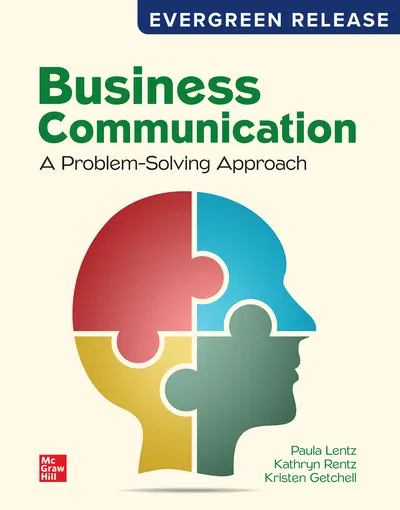Paula Lentz
Dr. Paula Lentz is a Professor and Academic Program Director in the Department of Business Communication at the University of Wisconsin–Eau Claire. She teaches Business Writing, Advanced Business Writing, and MBA courses. In addition, she directs the College of Business’s Business Writing and Presentations Studio and is also a developer and coordinator of the department’s Business Writing Fundamentals Program.
Dr. Lentz is particularly interested in qualitative research that explores narratives and organizational cultures, genre theory, and writing pedagogy. She has published in such journals as Business and Professional Communication Quarterly, Wisconsin Business Education Association Journal, Equal Opportunities International, Journal of Health Administration Communication, and Qualitative Research in Organizations and Management. Her book, Rhetorical Theory and Practice in the Business Communication Classroom, co-authored with Dr. Kristen Getchell of Babson College, received the Association for Business Communication’s 2019 Distinguished Book on Business Communication award. She also serves on the Association for Business Communication’s Executive Board and leads its Academic Environment Committee.
She continues to do freelance editing and provides consulting and writing services. She received a BA from Coe College, an MA from UW–Eau Claire, and a PhD in Rhetoric and Scientific and Technical Communication from the University of Minnesota.
Kathryn Rentz
Dr. Kathryn Rentz is a Professor of English at the University of Cincinnati. She taught her first business writing class as a doctoral student at the University of Illinois at Urbana-Champaign in the early 1980s and has been teaching workplace writing ever since. She helped establish the University of Cincinnati’s professional writing program and has served as its coordinator. She has also won the English Department’s teaching award, directed the department’s graduate program, and helped direct the composition program.
Dr. Rentz’s affiliation with the Association for Business Communication goes back to her beginnings as a business writing teacher. She has performed many roles for the ABC, including serving on the board of directors and chairing the publications board. She served two terms as an Associate Editor of the Journal of Business Communication and was Interim Editor from 2000–2001, for which she won the Francis W. Weeks Award of Merit. In 2008 she won the ABC’s Meada Gibbs Outstanding Teacher Award. In 2011 she was elected Second Vice President for the association. She served as President in 2013–2014 and Past President in 2014–2015. In 2018 she won the Distinguished Member Award.
Dr. Rentz has published articles on business communication pedagogy and research in such journals as Business Communication Quarterly, the Journal of Business Communication, Technical Communication Quarterly, and the Journal of Business and Technical Communication. She has participated in many professional meetings and seminars over the years and is always learning from her colleagues and her students.
Kristen Getchell
Kristen Getchell is an associate professor of business communication in Babson's Marketing division. She teaches business communication courses in graduate, undergraduate, and executive education programs. She currently serves as Co-Director for Babson Executive Education's Leadership Program for Women & Allies.
Her current research and consulting interests include virtual communication and collaboration, AI and business communication, and persuasive strategies in virtual sales interactions. Her scholarly work has appeared in publications including International Journal of Business Communication, Business Horizons, Business and Professional Communication Quarterly, British Journal of Educational Technology, and International Journal of Scholarship of Teaching and Learning.
She has served as the Director of Rhetoric in the Arts and Humanities Division. Prior to her work at Babson, she served as Coordinator of First-year Writing at Curry College. She served as an NCAA Faculty Athletics Representative (FAR) at Curry College and currently serves in the role again at Babson.
She is a member of the Association of Business Communication and currently serves as the Vice President for the Eastern Region for ABC.
